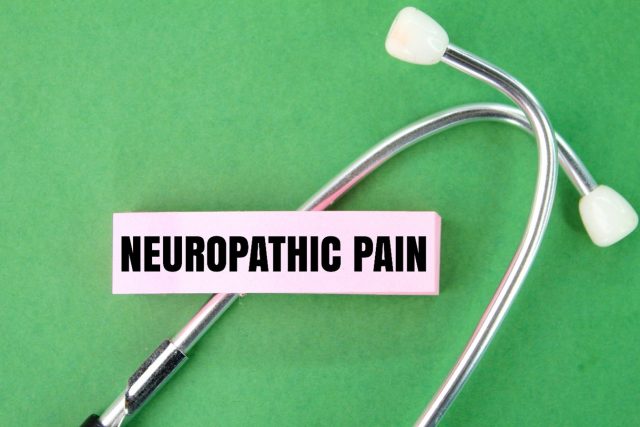Neuropathic pain, a complex and often debilitating condition, affects millions worldwide, manifesting in diverse and sometimes puzzling ways. Dr. Richard Hatfield, a dedicated family physician and cosmetic surgeon with a deep-rooted passion for improving patient health and well-being, explains that unlike nociceptive pain, which arises from visible injury or potential damage to non-neural tissue (like a cut or a bruise), neuropathic pain stems from damage or dysfunction in the nervous system itself, making its management a significant challenge in clinical practice.
What is Neuropathic Pain?
Neuropathic pain is primarily the result of nerve damage, which disrupts the way the nerves communicate with the brain. This can lead to abnormal signals that the brain interprets as pain. Conditions such as diabetes, cancer, multiple sclerosis, and infections are among the frequent culprits that damage peripheral nerves and induce neuropathic pain. Moreover, it can also originate from problems in the central nervous system, such as after a stroke or spinal cord injury.
Dr. Richard Hatfield, MD, emphasizes the importance of distinguishing neuropathic pain from other types of pain is crucial for effective management. While inflammatory pain is a response to a specific injury and serves a protective role, neuropathic pain does not have a protective or biological advantage. It is purely pathological, arising from the nerves themselves.
Symptoms of Neuropathic Pain
The symptoms of neuropathic pain are varied and can be significantly different from those of nociceptive pain. Common sensations include:
- Burning or coldness: Patients often describe a searing, burning pain or unusual cold sensations.
- Numbness or tingling: There might be a feeling of “pins and needles” similar to when a limb ‘falls asleep.’
- Shooting pains: These are sudden and intense pains that can be triggered by nerve misfiring.
- Sensitivity to touch: Light touches, like clothing or a gentle brush, can provoke pain, a condition known as allodynia.
- Electric shock sensations: Some patients describe spontaneous electric shock-like feelings, which are highly disruptive.
These symptoms can lead to severe discomfort and significantly impair the quality of life, making everyday activities challenging and sometimes unbearable.
Causes of Neuropathic Pain
Neuropathic pain can arise from a variety of conditions that involve either direct nerve damage or conditions that affect the nervous system indirectly. Richard Hatfield, MD, explains that some common causes include:
- Diabetes: One of the most common causes due to the nerve damage from high blood sugar levels.
- Postherpetic neuralgia: Following a shingles outbreak, lingering pain can persist long after other symptoms have resolved.
- Trauma: Accidents that result in nerve damage can lead to chronic pain.
- Surgical procedures: Post-surgical neuropathic pain is a significant problem, with nerves sometimes being inadvertently damaged.
- Infections: Certain infections like HIV or Lyme disease can affect nerve tissues.
- Neurological diseases: Conditions like multiple sclerosis and Parkinson’s disease can affect the central nervous system and cause neuropathic pain.
Challenges in Treating Neuropathic Pain
Dr. Richard Hatfield, MD, explains that treating neuropathic pain is notoriously difficult for several reasons:
- Complex mechanisms: The mechanisms underlying neuropathic pain are complex and not fully understood. This complexity can make it hard to target the pain effectively with medications.
- Diagnosis difficulties: Symptoms can be similar to other types of pain, leading to misdiagnosis or delayed diagnosis.
- Variable response to treatment: Patients with neuropathic pain often respond differently to treatments. What works for one person might not work for another.
- Side effects of medications: The medications used, like anticonvulsants, antidepressants, and opioids, often come with side effects that can complicate treatment.
- Psychological impact: Chronic pain can lead to psychological issues such as depression and anxiety, which can exacerbate the pain and make treatment even more challenging.
Approaches to Management
Given the complexities involved, a multi-faceted approach to treatment is often most effective. Richard Hatfield, MD, explains that this includes:
- Pharmacological treatments: Medications such as anticonvulsants (e.g., gabapentin, pregabalin), antidepressants (e.g., amitriptyline, duloxetine), and in some severe cases, opioids.
- Physical therapy: Techniques aimed at reducing pain and improving mobility can be beneficial.
- Psychological counseling: Addressing the psychological impact of chronic pain is crucial for holistic treatment.
- Neuromodulation: Advanced techniques like spinal cord stimulation or transcutaneous electrical nerve stimulation (TENS) can help modulate pain signals.
In conclusion, while neuropathic pain remains a challenging clinical problem due to its complex nature and the difficulty in its management, advances in understanding its pathophysiology and improvements in treatment strategies offer hope. Dr. Richard Hatfield, MD, emphasizes that ongoing research into more targeted therapies holds the potential to improve the quality of life for those suffering from this often incapacitating condition.








